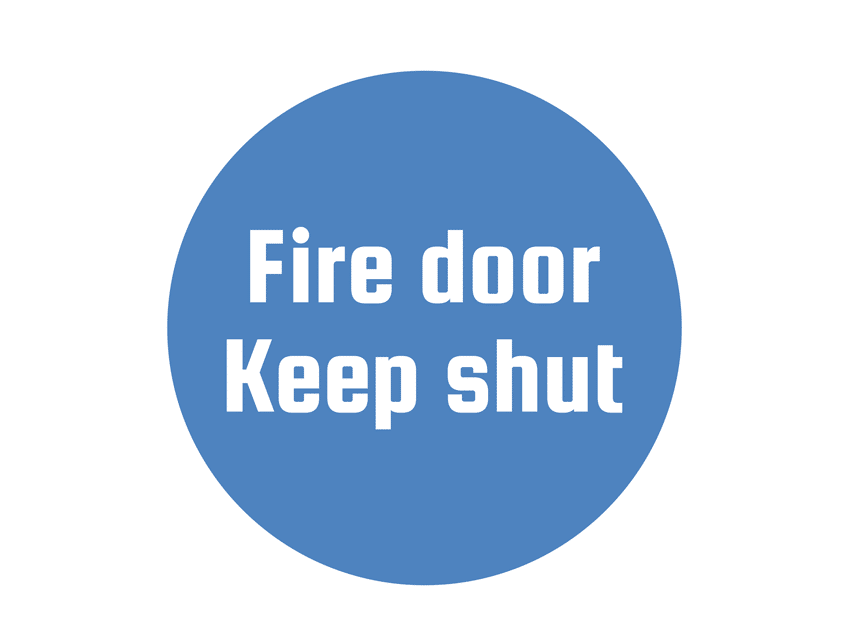Fire doors play a critical role in preventing the spread of fire and smoke within commercial and residential buildings. They are specifically designed and constructed to resist fire for a specific period, providing valuable time for people to evacuate the building safely. However, fire doors are only effective if they are installed correctly and maintained regularly. In this post, we’re going to explore the importance of fire door maintenance, why regular inspections are vital for fire door safety and how to spot potential faults with your fire doors.
The importance of fire door maintenance
Like any other part of a building, fire doors are subject to wear and tear and over time, the seals, hinges, frames, and glazing of a fire door can degrade, compromising its ability to perform in a fire. Regular maintenance and inspections can identify and address these issues before they become a significant risk to building occupants. Fire door maintenance is also a legal requirement and building owners and managers have a legal responsibility to ensure that fire doors are maintained and inspected regularly. Failure to do so can result in fines, legal action, and, most importantly, put building occupants at risk.
The most common faults with fire doors
The Fire Door Inspection Scheme (FDIS) has revealed that between neglect, misspecification and a misunderstanding of their significance, 75% of fire doors fail to meet the required standard.
Missing smoke or fire seals
Over 61% of the doors surveyed by FDIS were found to have missing or incorrectly fitted seals that failed to fill the perimeter gaps adequately, making this one of the most common faults with fire doors. These seals expand when exposed to heat during a fire, blocking any gaps around the door frame and preventing the spread of smoke and fire into other areas or rooms.
Excessive gaps around the door frame
If you can see excessive gaps between the side of the door and the frame, a fire door may be ineffective. There should never be a gap wider than 3mm at any point between the door and its’ frame and if you’re unsure you can actually test this with a £1 coin. The threshold gap (bottom of the door) of up to 8-10mm can be acceptable.
Incorrect or unclear signage
While it may seem like a small detail in fire door safety, accurate and clear signage is crucial. In case of a fire, it’s essential for people to be able to identify which doors are fire doors, their location, and how to access them. Without proper signage, individuals may leave the doors open or block them unknowingly, endangering others’ safety. Shockingly, over one-third of the doors inspected by the Fire Door Inspection Scheme (FDIS) had inadequate or incorrect signage.
Damaged door leaves
Damaged doors do not provide the same level of protection as those in perfect working order. Every aspect of the door such as the handle, lock and structure of the door should be checked within the door survey. Additionally, if the fire door in question is on an escape route, it must open in the direction of travel, without the use of a key.
Unsuitable or poorly fitted hinges
To ensure proper installation, a standard-height fire door should have a minimum of three hinges, each fitted with intumescent pads. For doors over 2.2 metres in height, four hinges are required. This helps to prevent warping during a fire by distributing the door’s weight evenly. Additionally, missing screws can compromise the strength of the door under the intense heat generated by a fire so should always be checked.
With that in mind, fire door maintenance is required to ensure that all doors continue to meet the required fire rating. Fire doors are typically rated to resist fire for a specific time, usually 30, 60, or 120 minutes. However, factors such as changes in the building’s use, modifications to the door or its surroundings, and wear and tear can all affect a fire door’s ability to meet its fire rating. Regular fire door inspections and maintenance can help ensure that the door continues to perform as intended and provide the necessary protection in a fire.
Need help with your fire door maintenance?
Fire door maintenance and regular inspections are vital for fire door safety and at Martyn Young Fireproofing Consultant we can conduct fire door surveys to ensure your doors stay compliant, continue to provide the necessary protection in a fire, and meet their required fire rating. Contact us today to discuss your requirements.
The post Fire door safety: how to spot potential faults appeared first on Total Fire Group.


